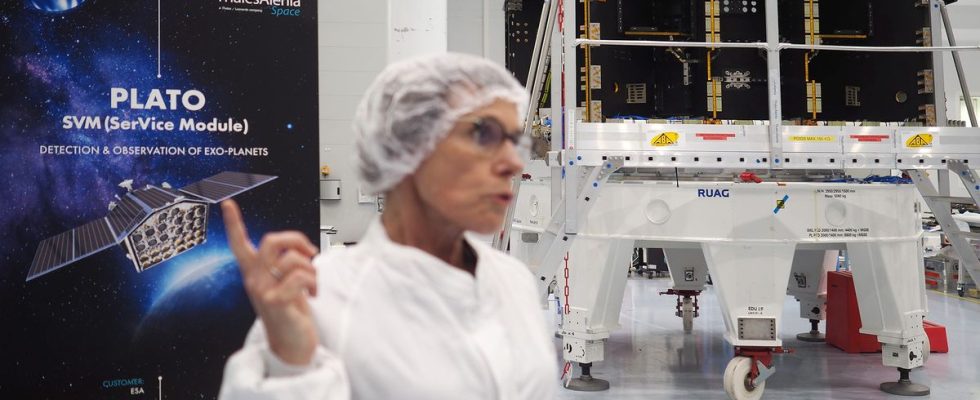Is there, in the immensity of the cosmos, a twin of the Earth? Another place where life could have developed, in one form or another. For more than thirty years, the observations of exoplanets (5,346 identified to date) and the promises of discovering an almost incalculable number of them have led scientists to imagine that no, we would indeed not be alone in the Universe.
In Cannes, at the satellite manufacturer Thales Alenia Space (TAS), the European Space Agency (Esa) is working on a new mission which will go in search of “a second Earth in the Universe”. Or at least other “habitable” environments outside of our solar system. 20 minutes was able to go to the clean rooms where the Plato telescope and its 26 eyes ready to scan the confines of our galaxy are preparing.
What is a “habitable” planet?
As of March 31, we had therefore already observed and listed 5,346 exoplanets. A drop of water in an ocean. “It is believed that there is, on average, one planet per star. And it is estimated that there are at least 100 billion stars per galaxy and possibly 2,000 billion galaxies. It really leaves a lot of possibilities”, explains Jean-Luc Petit, former head of the Plato program at Thales Alenia Space, where the vibration tests of the satellite’s solar generators have just been organized.
And among this figure of 23 zeros of potential candidates, “it is estimated that one in five is located in the habitable zone”, further indicates the specialist. With Plato, the Esa will target the regions surrounding the so-called “golden loops” stars. Neither too close nor too close, but where “the temperature is ideal for liquid water to exist on the surface of a planet”. Which will obviously have to be telluric, that is to say made of rock.
How will the Plato telescope work?
To raise the counter of exoplanets, Plato will look at the stars hoping to observe the “transit” of objects orbiting around them. The telescope and its 26 cameras, which will make it possible to create mosaics of images of nearly 2 billion pixels, will focus on photometry, that is to say the light variations of the stars observed. With a simple rule: if their brightness decreases at regular intervals, it’s because something is blocking the view. “Like during an eclipse, describes Jean-Luc Petit. And the amplitude of this drop will make it possible to specify the size of the object in question. »
The first two missions launched to discover exoplanets, CoRot between 2006 and 2014, and Kepler from 2009 to 2018, used the same process. But Plato will offer unparalleled precision with a “unique ability to be able to perform stable and very long-term observations”, boasts Thales Alenia Space. “The pointing accuracy will be extremely high,” says Catherine Vogel, the new head of the Plato program at TAS. A condition sine qua non to obtain reliable data, which the satellite will consolidate thanks to asteroseismology. This “study of the sound waves which cross the stars and which make them vibrate” makes it possible to determine their mass, their age and their radius. Essential information to characterize the planets that revolve around them.

The same areas scanned for more than two years
The mission should take off aboard Ariane 62 from Kourou, Guyana, at the end of 2026. Placed in a heliocentric orbit, that is to say around the sun, at the Lagrange point L2, at 1 .5 million kilometers from Earth, the telescope will focus on a field of space (much wider than in previous missions) for two and a half years, before changing it. “If we want to find planets with characteristics close to those of the Earth, we must rely on orbits of the same duration. It therefore takes at least two years, and the observation of two transits, to confirm their presence around the stars that the satellite will look at,” says Jean-Luc Petit.
The mission being planned for at least six years, Esa hopes to be able to analyze at least two different zones. “We are going to target sectors in which the stars have similarities with the sun, to give ourselves the maximum chance of finding habitable planets. But all that is not yet fixed, adds Catherine Vogel. Specialists are still thinking about the best places to explore. We are a bit like in the time of Christophe Collomb. We are really in the exploration”.

